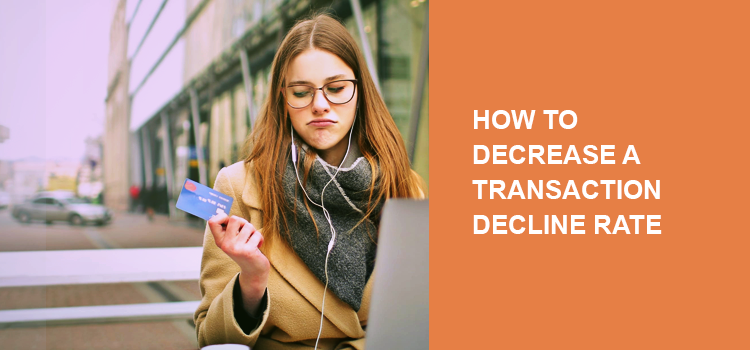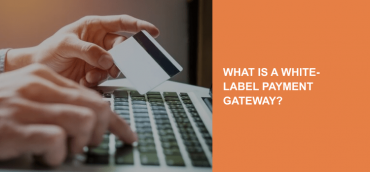Purchases worth almost $2bn are declined every year. This means that thousands of merchants lose good money in missed sales every day. And apart from missed sales opportunities, a high decline ratio also translates into suspicions from credit card brands to your business and possible limitations.
In today’s guide, we’ll explain what a declined transaction is, what different decline codes mean, how they affect your business, and how business owners can minimize its impact on their venture and grow the payment approval rate.
What is a declined transaction?
A declined transaction occurs when a creditor declines a credit card used as a payment method for a specific purchase. Most commonly transactions are declined due to user data entry errors including a wrong credit card number or an incorrect CVV. But there are more reasons for a decline than this.
To identify whether your decline ratio is within the limit, you can look into your industry’s standards. If you’re in the Business to Business segment, the normal and somewhat standard decline ratio is up to 14% of all monthly transactions while this number for Business to Consumer merchants can reach up to 18%.
Therefore, start with analyzing the percentage of declined transactions and then move on to analyzing their types and underlying reasons.
You might also like What is a Cashier system and why merchants should use it?
Types of card declines
There are two types of declined transactions:
- Soft declines.
This type of transaction declines comes as a result of technical or financial issues (e.g. network downtime). To fix the problem, one simply has to retry the transaction. However, as a rule of thumb, it is best not to retry the transaction more than three times. - Hard declines.
This type occurs when a transaction raises security concerns (e.g. an issuer doesn’t authorize the transaction due to potential fraud). To fix this problem, one has to contact his bank directly. These declines can’t be solved by retrying the purchase.
Common credit card decline codes explained
To better grasp the idea of why your transactions get declined, collect and analyze the most common reason codes. Note that codes differ depending on your credit card brand. But here are the most common reasons for transaction declines:
- A stolen card (43) – If the cardholder reported the card stolen, the bank will not let the payment through.
- Do not honor – The most common reason for a payment decline. Simply translated it means that a bank didn’t authorize the transaction and to resolve the issue a customer has to contact his bank.
- A lost card – If a cardholder reported the card lost, the payments conducted with it won’t go through.
- Invalid card number / Invalid CVV – It occurs when a customer made a data entry error.
- Card expired – This is quite self-explanatory: If the card has expired, the bank will decline the transaction.
- Insufficient funds – Simple as that, in case a user doesn’t have enough money on a card he’s trying to pay with for goods and services, he’ll see this error code,
- Stop recurring billing – You’re likely to meet this error code if you run a subscription-based business. It takes place when the user contacts his bank to inform that he would like to stop paying for a particular service. The solution is to get in touch with the user and ask why he’s made such a decision.
These seven error codes are the most frequent ones. However, there are dozens of smaller and more specific decline codes as well. Now, let’s see how declined transactions impact your business and how you can fight it to avoid the trouble.
You might also like Which business urgently need multiple payment providers
How declined transactions impact your business
The impact of declined transactions is hard to miss.
- Lost clients.
A customer is reluctant to work hard on things he’s used to be doing easy. For instance, online payments. In case anything goes wrong and his transaction is declined, you’ve only got 5% chances that he will come back. As a result, merchants lose valid hot leads to technical issues.
Besides, many merchants see declined transactions as the Universe’s way of saying that it just wasn’t meant to be. So, they leave. - Account termination.
Credit card brands tolerate no fraud or excessive risks some high-risk merchants. Therefore, merchants with an increased declined transactions ratio are flagged and monitored closely by major credit card brands. Exceeding the limit of allowed declined to approved transaction ratio (14% of all monthly transactions for B2B and 18% for B2C) puts you at risk of having your account terminated.
Finally, we’re here to offer you a “remedy” for over-the-roof card declines.
How to decrease a declined transactions ratio
To increase your payment approval rate, follow these effective yet simple (and not so much) steps.
- Find a processor with implemented cascading technology.
Cascading technology helps distribute declined transactions between multiple connectors to ensure a higher transaction approval ratio. Thus, for instance, Cashier by Ikajo International with its cascading technologies can grow your conversion by times. - Ensure smart payment routing.
High-end payment processors offer their merchants smart routing. This technology focuses on the transaction flow ensuring the best-firring conditions for each particular one of them. As a result, not only it cuts the expenses of merchants but also ensures an increased conversion rate. - Stay in touch with your consumers.
You can fix the problem before the decline lands on your site. Thus, if you keep track of all the card numbers and their expiration dates, make sure to contact the clients explaining that they will soon need to update their card data. And, of course, reach out to them after the decline took place to find out what the problem is and how you can fix it for him. - Retry the transaction.
This is a risky business. But if you’ve got a soft decline due to insufficient funds, you can try the transaction again within a couple of days. Maybe the customer was a little bit late on his credit card bill this time but has paid for it now.
Don’t use the technique should the hard decline occur.
Summary
An increased number of transaction decline rates is a red flag to the credit card brands that something is wrong with the business or there is a chance of fraudulent activities. As a result, authorities might pose restrictions or terminate the account. And even if not, declines result in lost clients or decreased customer loyalty.
However, there is a way to avoid it. A reliable state-of-the-art Cashier technology by Ikajo International ensures a high transaction approval ratio to its clients across verticals. Drop a line if you’d like to learn more!





